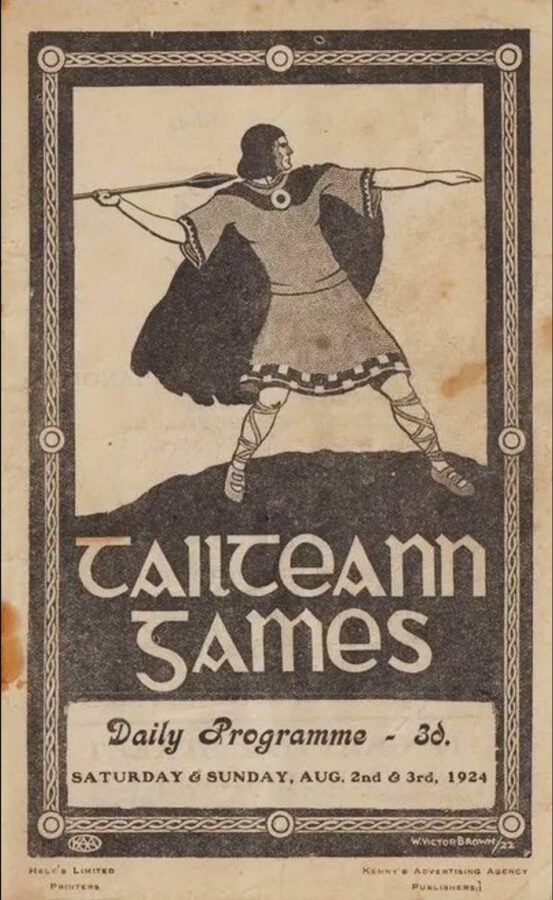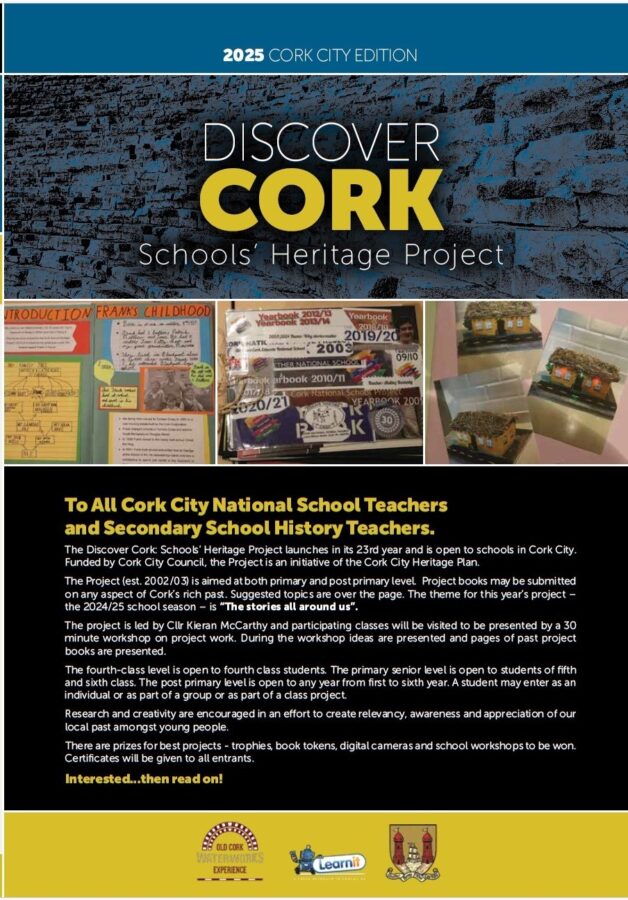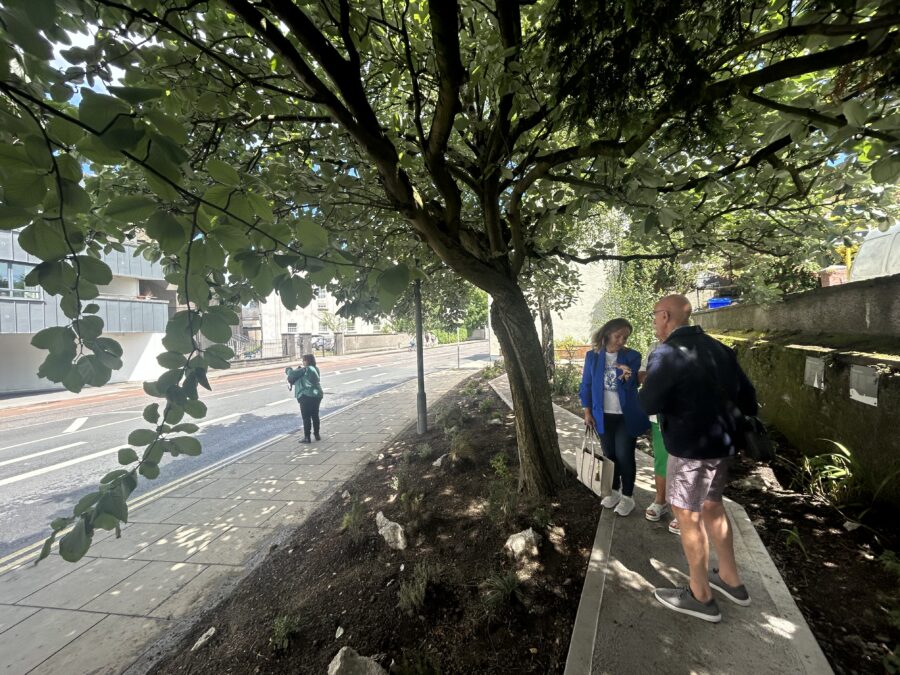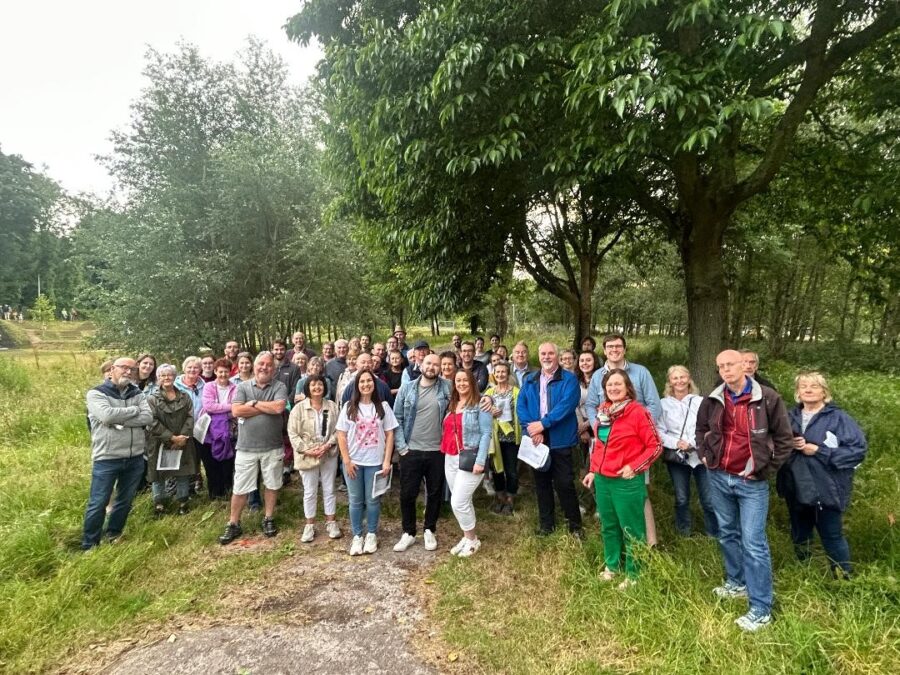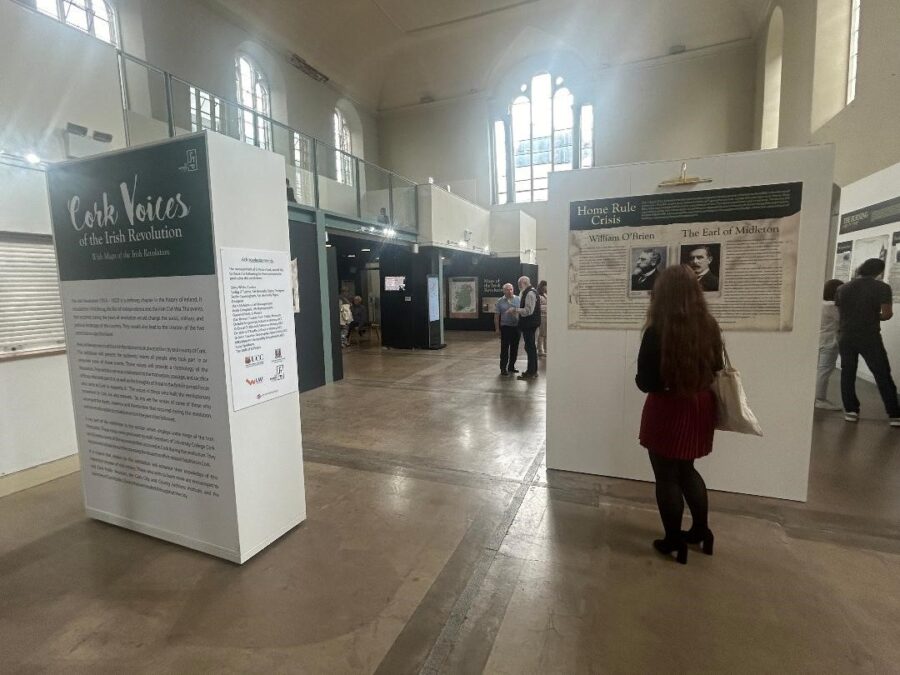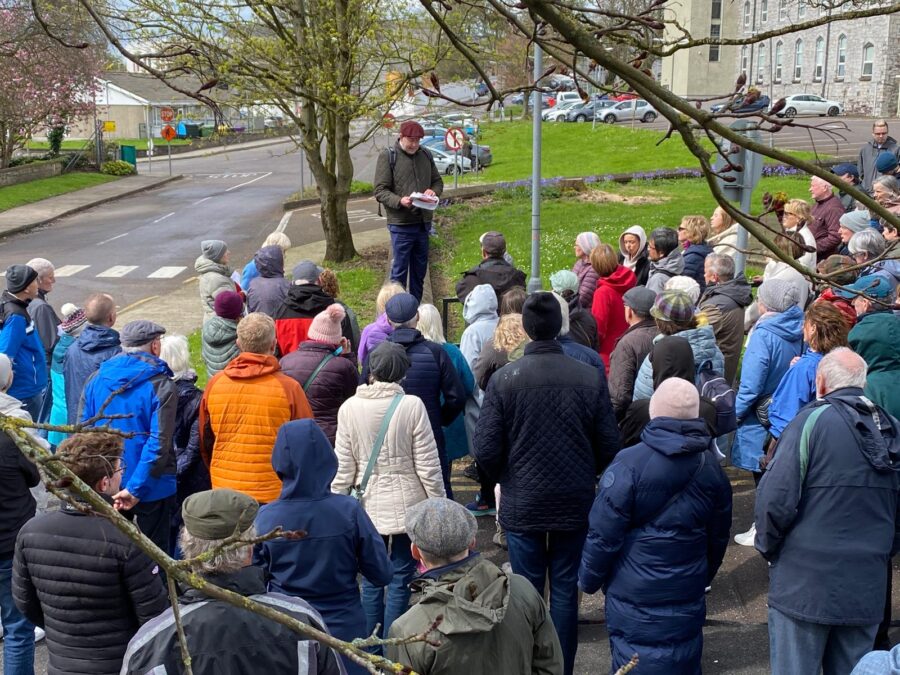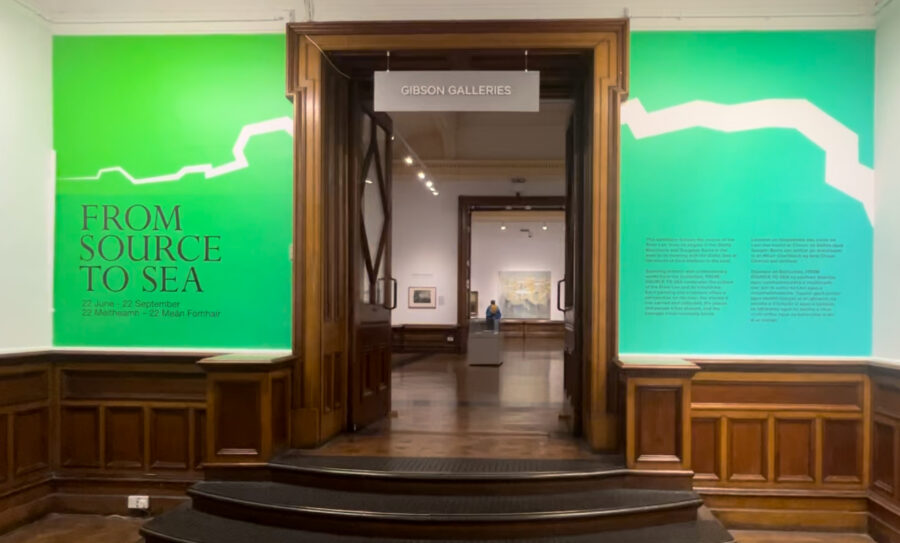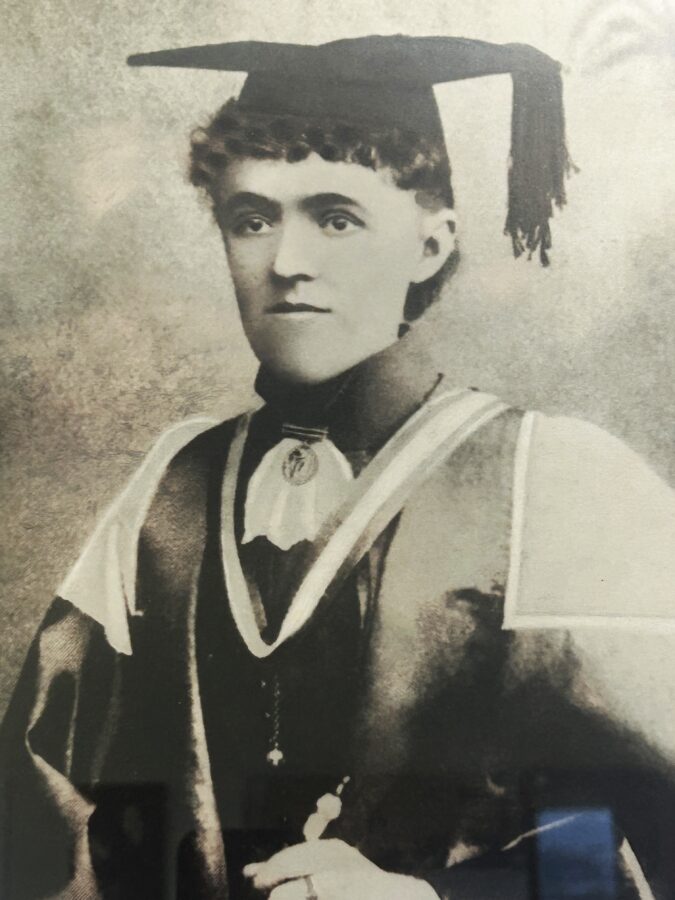
Kieran’s Our City, Our Town Article,
Cork Independent, 19 September 2024
Making an Irish Free State City – The Lectures of Dr Annie Patterson
Reading the Cork Examiner from 1920 to 1930 and mapping the cultural changes in Cork City, there are some people who have been recognised in Cork history and many others whose memory has faded. Dr Annie Patterson is one such character, who appears regularly in the Cork Examiner from 1924 to 1934. Her championing of Irish music through her curation of public talks and courses is very notable in the write-ups of her work in the newspaper.
Annie’s obituary in 1934 in the Cork Examiner on 17 January describes how she forged a career in, as the newspaper describes, as one of the “most outstanding figures in contemporary Irish musical circles”.
Born in Lurgan, County Armagh in 1868, Annie was educated at Alexandra College. At an early age she showed a love for the Irish folk music. At the age of nineteen she graduated with a BA and Bachelor of Music. Two years later she became a Doctor of Music – the first woman between Britain and Ireland to achieve such as a distinction.
Annie was an organist at several Dublin churches between 1887-1897. She had huge interests in the Irish Cultural Revival especially in the realm of Irish music. She composed the music for ‘Go mairidh ár nGaedhilg slán’, an anthem for the Gaelic League. In 1892 Annie was appointed Examiner in Music at the Royal University of Ireland and was re-elected to this post in 1900, having previously been conductor of the Hampstead Harmonic Society in London.
In 1897 Annie was the prime mover in the organisation of a committee to curate the Feis Cheoil music festival, which is now one of the outstanding annual events in Irish musical circles. The Dr Annie Patterson Medal is still awarded in her honour at the festival.
Annie resigned her post in Dublin. She came to Cork, where she became Organist at St Anne’s Church, Shandon. In 1900 she was appointed Examiner in Music to the Irish Intermediate Board of Education. She also held a similar post of Examiner at the Cork School of Music during the years 1914-1919 and to the Leinster School of Music, 1919-23.
In early July 1924 Cork Corporation formally sponsored a lectureship in Irish music at University College Cork. Annie applied for the post and was successful. Her interest in educating the general public on Irish Traditional Music or Irish Folk Music was very evident from the outset of this job.
Annie’s first big educational project was aimed at schools across the country as she created a selection of Irish and Anglo-Irish songs, set to their traditional melodies and provided with a suitable pinaforte accompaniment.
By mid-October 1924 Annie commenced a public lecture series course of about thirty lectures on Saturday afternoons. A small fee of 5 shillings was charged for the entire course. These talks were spliced with musical illustrations, vocal and instrumental, and supplied by prominent local musicians. The topics that Annie covered ranged from Ancient Irish Harpers to Collections of Irish Music to the Development of Irish Music.
By the time the 30th public lecture came around on 20 June 1925, Annie had made strong public calls on the need for the practical revival of Irish Traditional Music or Irish Folk Music and to connect it to the evolving Irish identity with the embryonic Irish Free State. Against the backdrop internationally of new sweeping jazz music from the US, Annie also noted the need for Irish Folk Music to connect across other instruments and not just focus on pianoforte – that it should have a larger reach across musicians and hence to the general public.
The Cork Examiner notes that the first season of Annie’s public lecture series as having small public numbers. So, Annie embarked upon a second series of 30 public lectures from October 1925-June 1926. By the close of the end lecture on 25 June 1926, the spacious examination hall at the University College was crowded to hear Annie give her closing lecture of the session. It was entitled “Utilising National Musical Traditions”, which explored the distinguishing features between the bardic and country traditions.
Unrelenting in her passion for promoting Irish Traditional Music, Annie began her 30 week public lecture course again in October 1926 to June 1927. With larger crowds from the second season, Annie started her course again in mid-October 1927 and it ran to June 1928. In addition, during 1927-1928, Annie was given an opportunity to perform her Irish traditional arrangements on the new Cork radio station 6CK. It opened in late March 1927 and the Cork programme were relayed through the national Irish Free State 2RN. 2RN began broadcasting in Dublin on 1 January 1926 and was the first radio broadcasting station in the Irish Free State. A glance at the radio programme across Spring and Summer 1928 shows Annie was a regular contributor.
From the winter of 1928 to the winter of 1933, Annie continued her 25-week course and detailed public lecture series in Traditional Irish Music. In addition, she became a regular contributor to the Cork Examiner covering topics on opera to producing musical selections on radio.
For St Patrick’s Day 1933, a special Irish programme entitled Rambles in Erin, was broadcast from the New York Studios of the Columbia Broadcasting system It included Irish music, songs and a symphony orchestra played compositions by Annie.
In the first week of January 1934, the national R2N radio station noted her absence due to illness. She died from a cold on 16 January at her residence at 43 South Mall. Her remains were removed to Dublin by motor hearse. She was buried in Mount Jerome Cemetery. Votes of sympathy were passed by Cork Corporation and Cork Harbour Commissioners and other bodies in the days that followed her death.
Annie’s obituary in the Cork Examiner on 17 January 1934 highlights that during the ten years of Annie’s lectureship at the University College, interest in Irish music showed first a gradual and then a rapid growth. The newspaper notes: “Annie was appreciated by the College authorities and her students alike as one deeply interested in her subject and possessed of a profound knowledge of its every phase. Her lectures never failed to draw a full gathering of students to the hall and she spent much time in making interesting listening about Irish musicians, their work and their characteristics”.
In addition, Annie’s many contributions to musical literature were widely read and appreciated. She continuously sought to tell the story of Irish music through a number of books, which included such titles as The Story of Oratorio, Schumann, The Native Music of Ireland, Our National Musical Heritage, Ceol na nGaedheal, The Profession of Music and How to Prepare It.
Kieran’s Upcoming September Tours (end of season), all free, 2 hours, no booking required:
- Saturday 21 September, Fitzgerald’s Park: The People’s Park, meet at the park band stand, 2pm.
- Sunday 22 September, Stories from Blackrock and Mahon, meet in adjacent carpark at base of Blackrock Castle, 2pm.
Caption:
1271a. Portrait of Dr Annie Patterson, late nineteenth century (source: Department of Music, UCC; many thanks to all who helped in the Department in providing the image).
